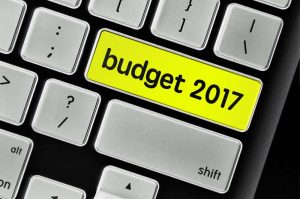Posted on January 13, 2017 at 12:30 pm by BeeMyMinder
How to increase savings in 2017

For many, the New Year brings a repetitive list of resolutions, and to increase savings is nearly always top of the list. From cutting back on eating out to storing bills online, there’s so many ways you can achieve your savings goals.
The Money Advice Services undertook a study into the nations’ saving habits, and their findings showed that “two in five of the working population have less than £100 in savings”.
So this month we’ve created a list of simple ways you can increase savings in 2017.
Remember your renewal dates
It’s the age-old advice, but you need to make sure that you’re getting the best deal possible on your bills. One of the easiest ways to do this is to remember your renewal dates and store bills online.
These bills can be on anything from utilities to credit cards, but remembering the renewal date of a policy and comparing the marketing can save you hundreds over the year.
Each policy you take out with an introductory offer has an expiry date, so make sure that you remember when it is. If you want to store bills online and save money on your bills, then BeeMyMinder can help. Find out how here.
Compare the Market
It sounds similar to remembering your renewal dates, but comparing the market is one of the best ways you can increase savings. Many policies do offer introductory rates, but these soon disappear a year into your policy.
There are so many ways to remember the policy renewal dates, from writing them down on a calendar to storing bills online. Sites such as gocompare.com and comparethemarket.com compare deals through the entire market to find you the right deal.
Set yourself a goal
Setting a goal is one of the first steps to saving money. On average, we would recommend that you try to save enough money to cover (as a minimum) two months worth of bills.
When planning how much to save each month, you must be realistic with yourself. You need to take into account vital expenditure, such as food and travel costs, and not leave yourself short each month.
Saving money can be a hard task, so make sure that you give yourself a little reward each time you achieve your goal. Just because you’re setting money aside each month doesn’t mean that you have to stop enjoying life.
Set up a savings account
The recent coverage in the media has portrayed savings accounts as next-to-useless when it comes to saving money. Interest rates are at an all time low, but that shouldn’t out you off setting up an account to help save yourself money.
Once your new savings account has been set up, then start paying into it with a direct debit from your current account. You could do this on a weekly, bi-weekly or monthly basis, but make sure you’re not going to be caught short before payday.
For example, saving £10 or £20 per week for 12 months could leave you with a total savings amount of £520 or £1040 respectively.
Set aside any spare cash at the end of each week
In the modern retail world, people are used to paying for nearly everything on credit or debit cards. How often do you have physical notes and coins in your purse or wallet?
If you do use cash often, then you could start to set aside any leftover cash at the end of each week. One of the best ways to keep this cash from being spent is to store it in a tin or piggy bank that you physically have to break to get into.
This means that you won’t be spending the money whilst it’s secure, and you might be surprised on how much you can save each week.
At the end of each month, add all this money back into your savings account and then keep track in a simple Excel document to see how much you’ve been able to put aside.
New apps allow you to round-up purchases and then invest the spare change into a savings or investment fund e.g www.moneyboxapp.com
Balance transfer to interest-free
If you currently have outstanding debt on credit cards that have slipped over their interest-free period, then consider balance transferring to a new account.
Some lenders offer anywhere from interest-free periods of anywhere from 24 to 48 months, as long as you continue paying the minimum amount each month.
For the best deals on balance transfer credit cards, take a look this chart from Money Saving Expert. It’s updated daily, and gives you a guide on safely shifting your debts.
Track your spending
Another worthwhile exercise when you want to increase savings is keeping a Money Tracker.
This can be as simple as an Excel spreadsheet that records all in-going and out-going totals on your current account. This allows you to highlight areas you could cut down on (magazine subscriptions) and identify areas you could save on (car insurance or utility bills).
You can explore the numerous apps that itemise your spending and allow you to make informed decisions. Note: they tend to require access to your bank account details to provide real-time analysis.
So there we have it, our top tips for increasing your savings this year.
If you found this post useful, and want to reduce your expenditure even more, then our post on saving money each month will give you all the information you need.
BeeMyMinder is going to be changing soon; we’re upgrading our system. You can keep up to date on all our updates by Liking us on Facebook here, following us on Twitter here, or signing up to our online renewal reminder service here.

